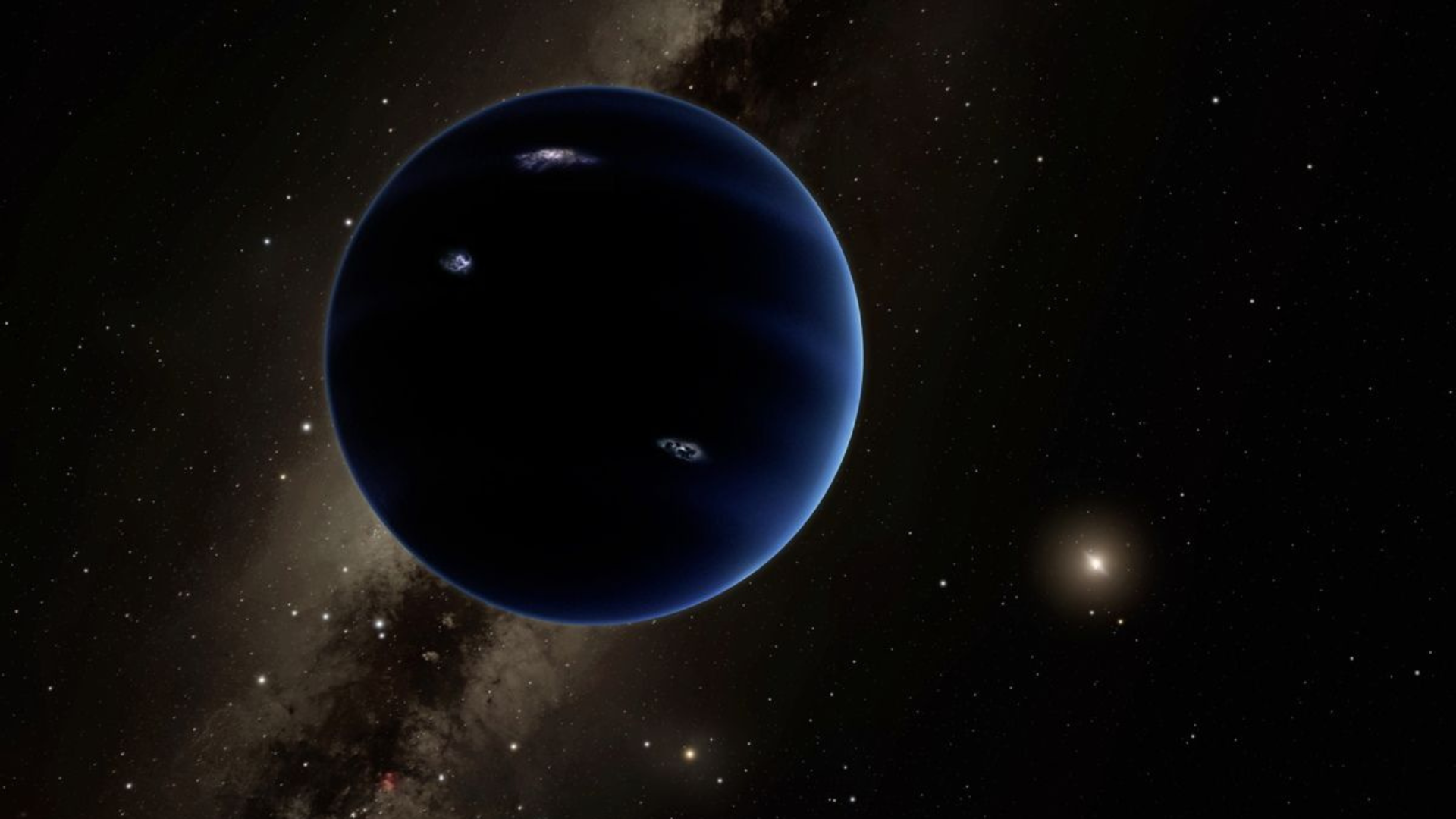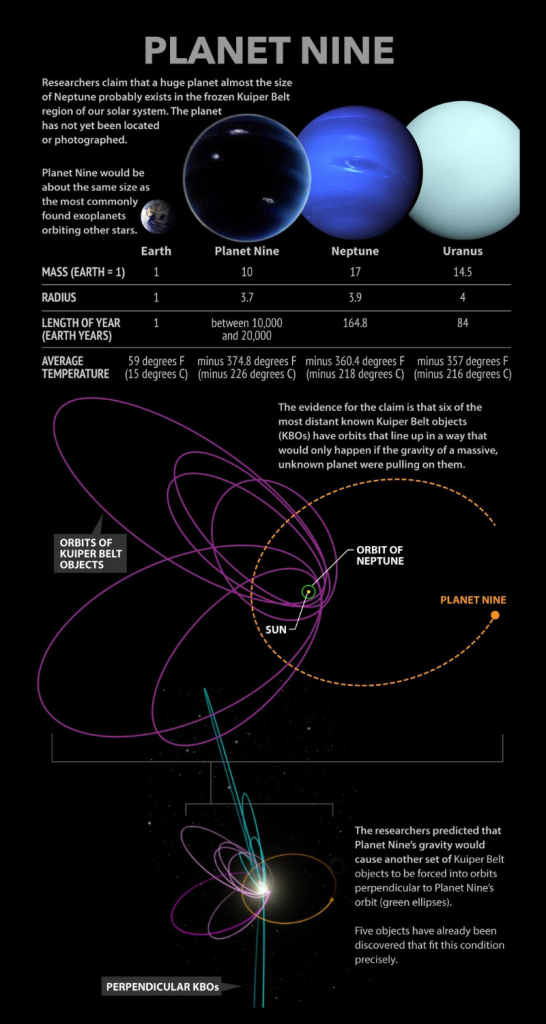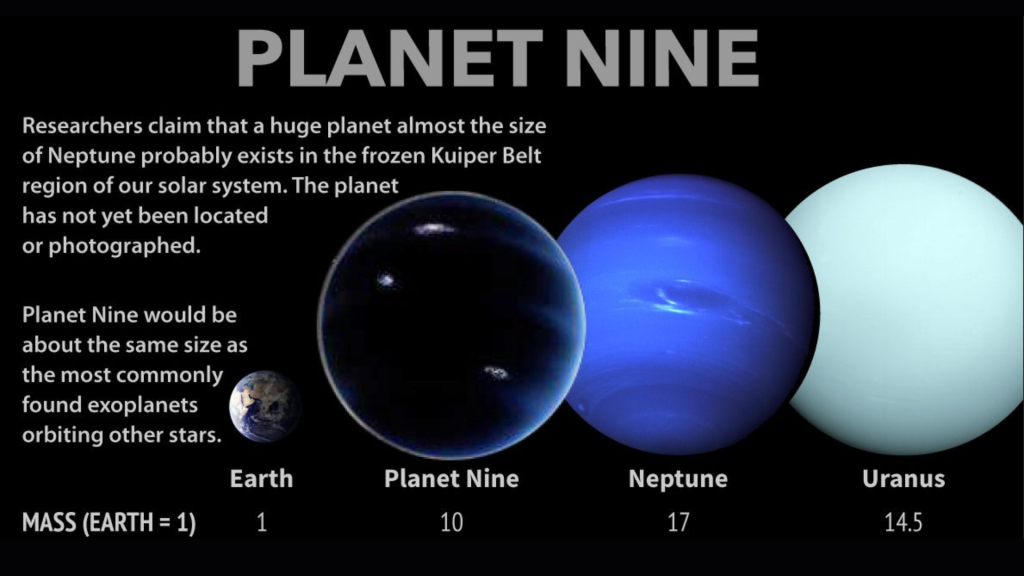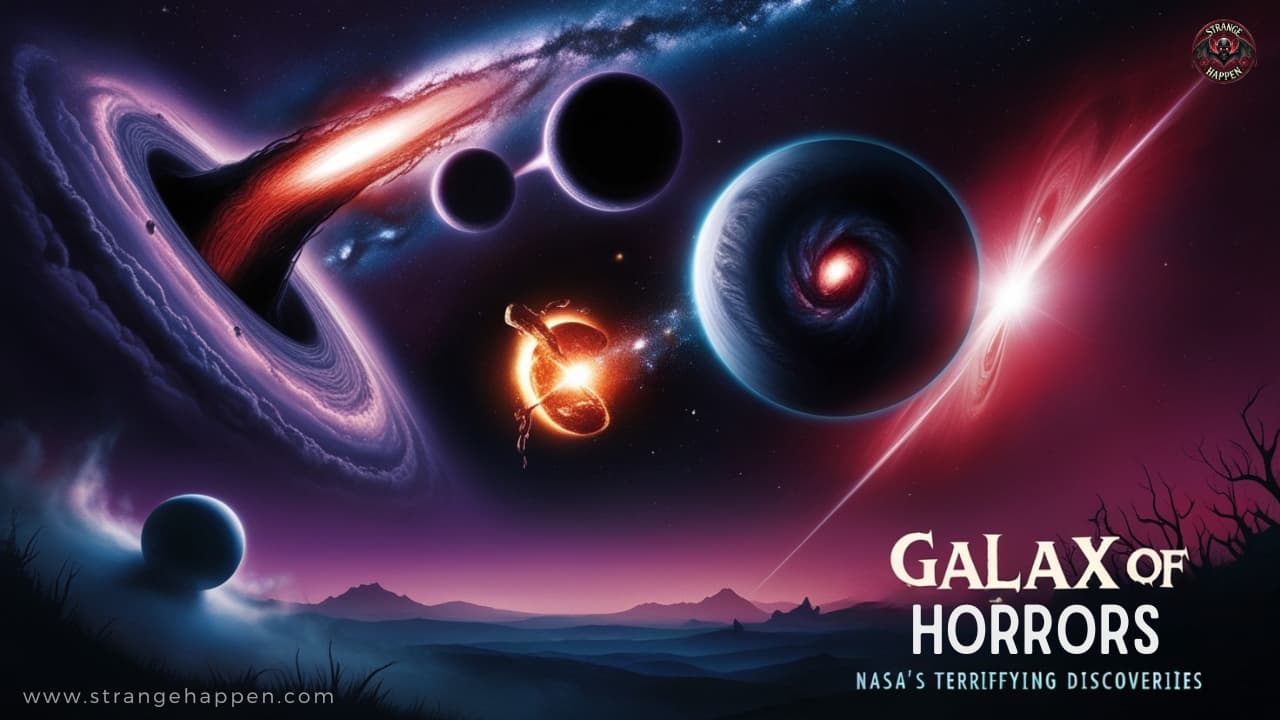Planet Nine

The Elusive World Beyond Neptune Planet Nine
Planet Nine, otherwise called Planet X, is perhaps the most convincing secret in contemporary stargazing. Speculatively, this far-off world is proposed to make sense of the strange circles of a few far-off divine items past Neptune. This blog gives a top-to-bottom investigation of Planet Nine, inspecting its proposed qualities, the continuous quest for it, and its expected ramifications for how we might interpret the nearby planet group.
Planet Nine The Discovery of Anomalies
The idea of Planet Nine got forward momentum from perceptions of trans-Neptunian objects (TNOs) — little, frosty bodies situated in the external planetary group. In 2016, cosmologists Konstantin Batygin and Mike Brown saw that the circles of a few TNOs were grouped such that they were being impacted by a concealed gigantic body. Their exploration demonstrated that these articles’ ways were conflicting with the known gravitational impacts of the eight perceived planets. This prompted the speculation that a 10th planet may be applying gravitational power, modifying their circles.

1. Key Observations:
- Orbital Bunching: TNOs like Sedna and Eris show uncommon orbital qualities that don’t fit well with the gravitational impacts of the known planets.
- Reenactments: PC models mimicked different setups, proposing that a planet of significant mass could represent these inconsistencies.
Hypothetical Characteristics of Planet Nine
1. Size and Mass:
- Gauges: Planet Nine is speculated to be around 5 to multiple times the mass of Earth, fundamentally bigger than any planet presently known in our planetary group.
- Correlation: This spots it in the scope of a Super-Earth or a Mini Neptune, with a mass possibly similar to the gas goliaths, yet reasonably more monstrous than Uranus or Neptune.
2. Orbit and Distance:
- Stretched Circle: The circle of Planet Nine is estimated to be profoundly circular, meaning it would have an exceptionally prolonged way around the Sun.
- Neptune Distance: Assessments propose that Planet Nine could be situated somewhere in the range of 400 and 800 AU from the Sun. For correlation, Neptune circles at around 30 AU, making Planet Nine’s distance a lot more noteworthy and its orbital period possibly millennia.
3. Composition:
- Conceivable Piece: Planet Nine may be made out of hydrogen, helium, and different frosts (like water, alkali, and methane), like the arrangement of ice goliaths like Uranus and Neptune.
- Barometric Qualities: If it has a thick climate, it could show attributes like high breezes, dynamic weather conditions, and huge occasional varieties.
The Search for Planet Nine
The journey to find Planet Nine includes numerous methodologies, including observational reviews and hypothetical displays.
1. Observational Efforts:
- Adjustable Reviews: Huge telescopes, similar to the Subaru Telescope in Hawaii, are utilized to check the sky for weak, far-off objects. These studies mean to identify any indications of Planet Nine through its mirrored light or gravitational impacts on neighboring articles.
- Challenges: The faintness of Planet Nine, joined with its tremendous distance, makes discovery very troublesome. Its expected low splendor and sluggish development require long-haul perception and high-level imaging procedures.
2. Theoretical Models:
- Reenactments: Space experts use PC models to recreate the possible orbital elements and gravitational impacts of Planet Nine. These models help foresee where the planet may be found and refine observational methodologies.
- Refinement: Progressing reenactments are changing forecasts in light of new information and working on computational strategies, assisting with reducing potential pursuit regions.
Implications of Discovery
The revelation of Planet Nine would have significant ramifications for different fields of study.
1. Solar System Formation:
- Verifiable Bits of knowledge: Planet Nine could give important data about the early planetary group, especially the development and movement of planetary bodies. Understanding its development could reveal insight into the cycles that molded the external areas of our Slar System.
- Planetary Elements: The presence of a monstrous planet in the external planetary group could offer signs about the gravitational impacts that represented the circles of other far-off bodies.
2. Planetary Science:
- Relative Examinations: Concentrating on Planet Nine would improve how we might interpret planetary science, especially concerning the qualities and ways of behaving of enormous, far-off planets. This could prompt new experiences into the airs, syntheses, and inner designs of comparative exoplanets in other star frameworks.

- New Revelations: The presence of Planet Nine could prompt the disclosure of extra far-off objects or planetary frameworks, growing our insight into the Slar System and then some.
Conclusion
Planet Nine’s remaining parts are quite possibly the most fascinating and subtle secret in present-day cosmology. While it has not yet been straightforwardly noticed, the quest for this speculative planet, similar to the continuous investigation of Venus, keeps on driving logical requests and investigations. As innovation propels and observational methods improve, the possible disclosure of Planet 9 and further experiences into Venus vow to offer critical disclosures about the development and advancement of our nearby planet group. Up to that point, the journey for Planet 9, close by Venus research, epitomizes the interest and assurance of established researchers, committed to investigating the farthest reaches of our infinite area.




